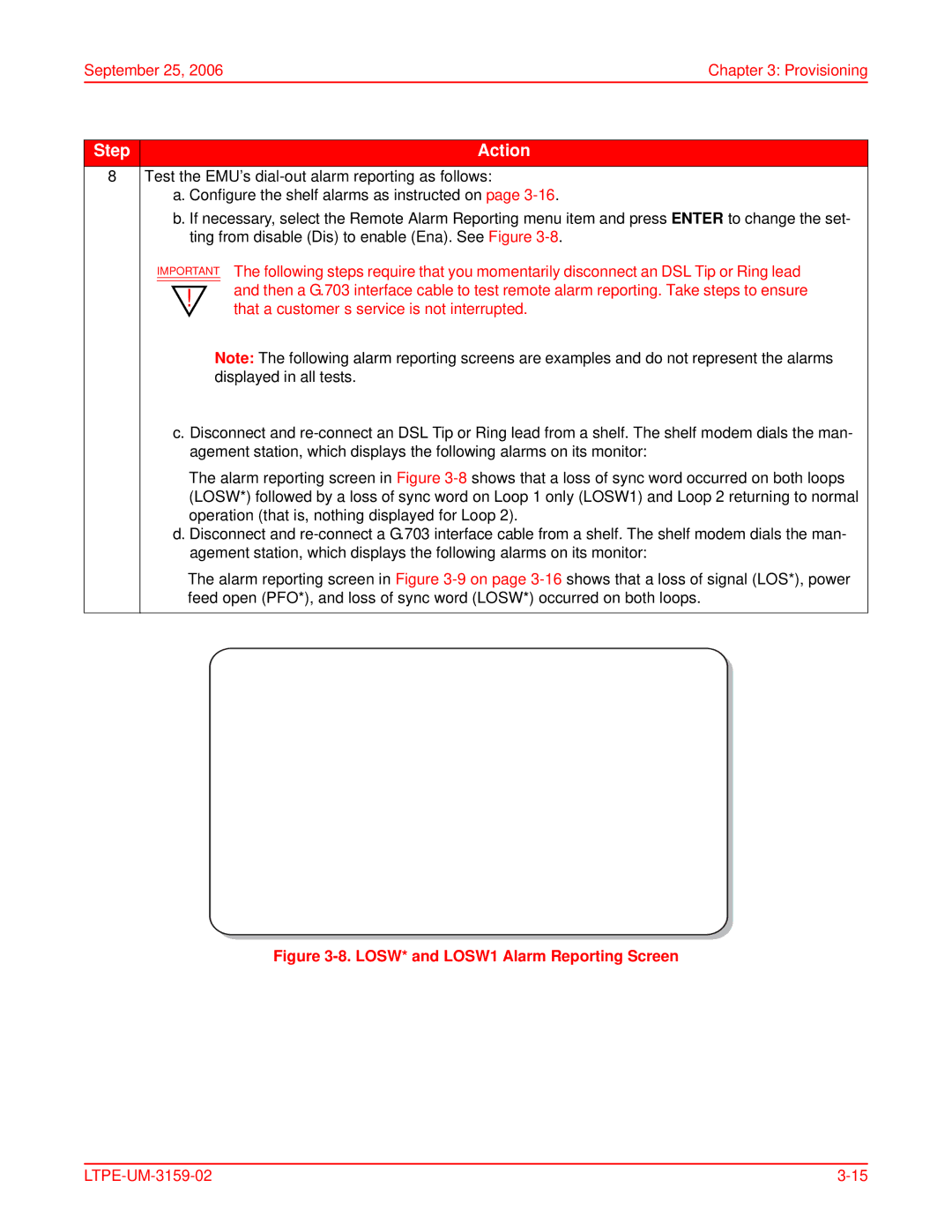
September 25, 2006 | Chapter 3: Provisioning |
Step | Action |
8Test the EMU’s
a.Configure the shelf alarms as instructed on page
b.If necessary, select the Remote Alarm Reporting menu item and press ENTER to change the set- ting from disable (Dis) to enable (Ena). See Figure
IMPORTANT The following steps require that you momentarily disconnect an DSL Tip or Ring lead and then a G.703 interface cable to test remote alarm reporting. Take steps to ensure that a customer’s service is not interrupted.
Note: The following alarm reporting screens are examples and do not represent the alarms displayed in all tests.
c. Disconnect and
The alarm reporting screen in Figure
d. Disconnect and
The alarm reporting screen in Figure
Figure 3-8. LOSW* and LOSW1 Alarm Reporting Screen
|
